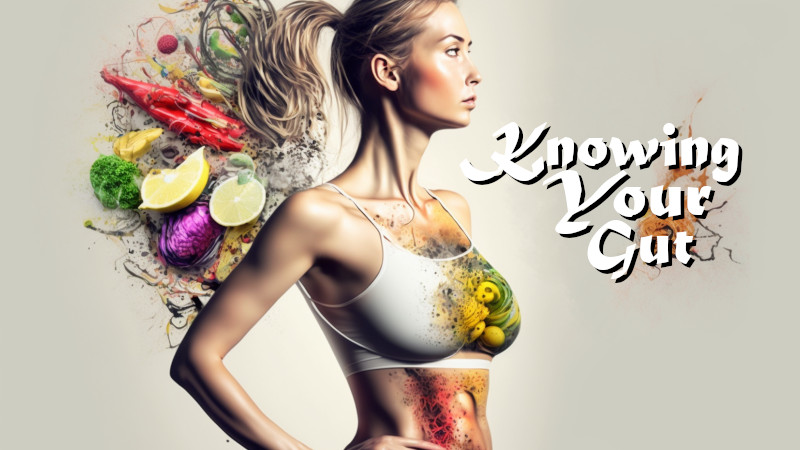The last decade has seen a surge in conversations surrounding the significance of our gut. Our gut, often dubbed the “second brain”, is a cornerstone of our overall health and well-being. This “second brain” houses an intricate network of nerves, known as the enteric nervous system, enabling communication between our gut and brain, establishing the gut-brain axis. It is with this understanding that we will begin to take a closer look at gut health from a slightly different perspective.
This connection has illuminated the gut’s role in producing serotonin, a key player in mood regulation and sleep. The gut also plays an essential part in our stress and relaxation responses, through the hypothalamic-pituitary-adrenal (HPA) axis and the vagus nerve respectively. 1
Did you know that a little bit of relaxation in the form of meditation can help to improve your gut health?
The gut is home to a staggering 100 trillion microorganisms along with their genetic material, collectively referred to as the microbiome. The potential of this living bacteria is just beginning to be unearthed by scientists, with particular interest in its role in immunity, inflammation, and pain. 2
This series considers the relationship between gut health and pain, and aims to delve into the complexity of our gut and why it’s attracting such immense scientific interest.
Table of Contents
A Comprehensive Understanding of Your Gut
To comprehend the role our gut plays in our health and well-being, it’s crucial to familiarise ourselves with it. We need to consider its structure, function, significance, and its connection to pain. In this first article, we will discuss key topics about gut health.
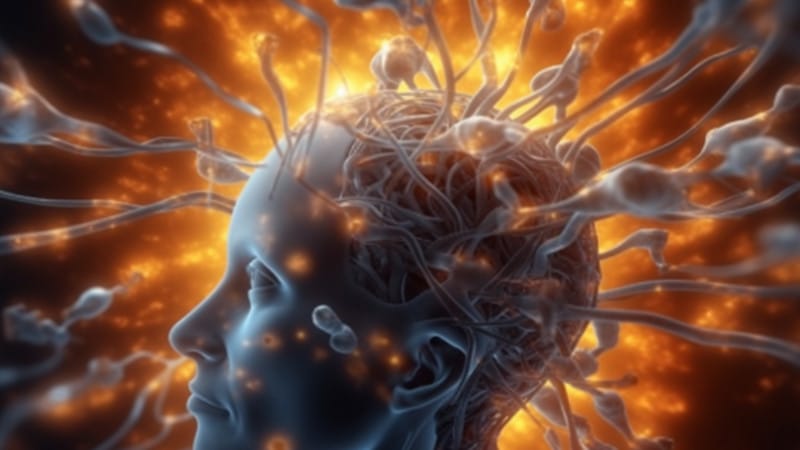
What Constitutes Your Gut?
The term “gut” refers to the gastrointestinal system or digestive tract, comprising organs including:
- Mouth
- Salivary glands
- Esophagus
- Stomach
- Pancreas
- Liver
- Gallbladder
- Appendix
- Small intestine
- Large intestine
- Rectum, and
- Anus.
Our gut is responsible for digesting the food we consume into nutrients and energy vital for our survival.
At every stage of our digestive system, food is broken down and converted into resources we need for various bodily functions. And so, the old phrase “you are what you eat” rings true.
Our diet forms the basis of our overall health and well-being, influencing every cell in our bodies.
The gut plays a multifaceted role including:
- Supporting brain health and memory function
- Supporting eye health and function
- Digesting of food and, processing and transportation of waste
- Supporting cardiovascular health
- Supporting the strengthening of bone, muscle, and ligament repair
- Supplying required energy to support mental and physical activity
- Bolstering the immune system
- Supporting the repair of cells and tissues
Over a time frame of approximately 40 to 50 hours, our gut transforms the food we eat into the essential nutrients, vitamins, and minerals we need. But this is just one aspect of its function.
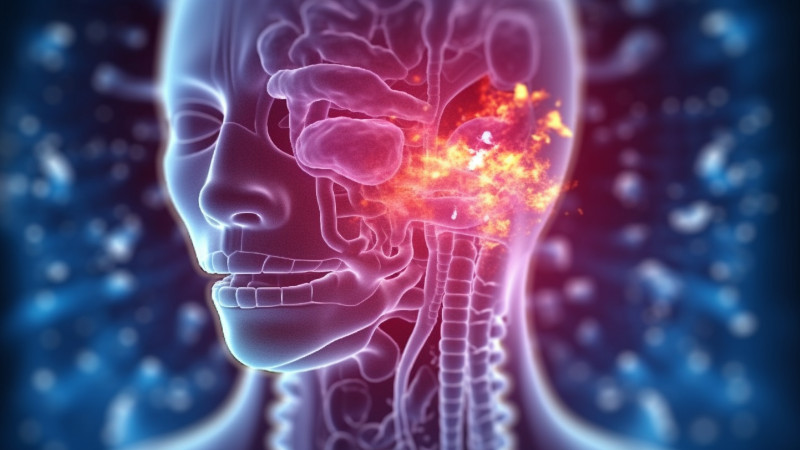
Our gut also acts as a safeguard and barrier, ensuring that substances are not released into the bloodstream until they are safe and ready to do so. Beyond this, our gut performs numerous other critical functions including:
- Maintaining and protecting our overall health and well-being 3
- Facilitating absorption of water and nutrients from the food we consume 4
- Converting food into essential building blocks for our bodies
- Hosting many of our neurotransmitters – including serotonin and GABBA
- Supporting our immune system 5
- Facilitating communication with our brain (the gut-brain axis) 6
- Hosting more than 100 million nerve cells (The Enteric Nervous System) 7
- Regulating stress, mood, pain, and our general state of mind 8 9 10 11
- Nurturing our gut microbiome
What is the Gut Microbiome?
Our gut microbiome comprises the 100 trillion microorganisms and their genetic material inhabiting our gut. These micro-organisms include fungi and bacteria, the latter being the most prevalent. The composition of our microbiome varies from person to person and is influenced by several factors including:
- Mode of birth (cesarean versus vaginal) 12
- Initial infant diet 13
- Age and gender 14 15
- Geographical location 16
- Personal hygiene habits 17
- Stress levels 18
- Medications, especially antibiotics 19 20
- Presence of other diseases or illnesses 21
These factors contribute to our “unique bacterial fingerprint,” which carries out various crucial functions that uphold our overall health and wellbeing, such as:
- Boosting immune function 22
- Assisting in the digestion and absorption of nutrients, especially iron, zinc, and magnesium 23
- Facilitating healthy energy production
- Regulating inflammation 24
- Enhancing mood, notably through serotonin production 25
- Producing vitamins such as folate, biotin, B12, and K2
- Managing metabolism and weight 26
- Improving sleep quality
- Regulating pain
What is the Relationship Between our Gut Microbiome and Pain?
A healthy gut hosts a diverse and plentiful microbial colony, a state known as “Eubiosis.” Conversely, “Dysbiosis” – a poor balance or a low or irregular microbiome – is linked to various diseases, including: 27
- Depression 28
- Inflammatory Bowel Disease (IBD) 29
- Fibromyalgia 30
- Complex regional pain syndrome 31
- Multiple sclerosis 32
- Autism spectrum disorder, and
- Alzheimer’s disease. 33
This correlation has piqued researchers’ interest, although it remains unclear whether dysbiosis is a consequence or a cause of these diseases.
What is the Relationship Between Gut Microbiome and Pain?
The relationship between our gut microbiome and pain has been a topic of interest among researchers. Notably, alterations in gut bacteria have been observed in individuals suffering from painful gastrointestinal conditions such as inflammatory bowel disease and irritable bowel syndrome. 34 35
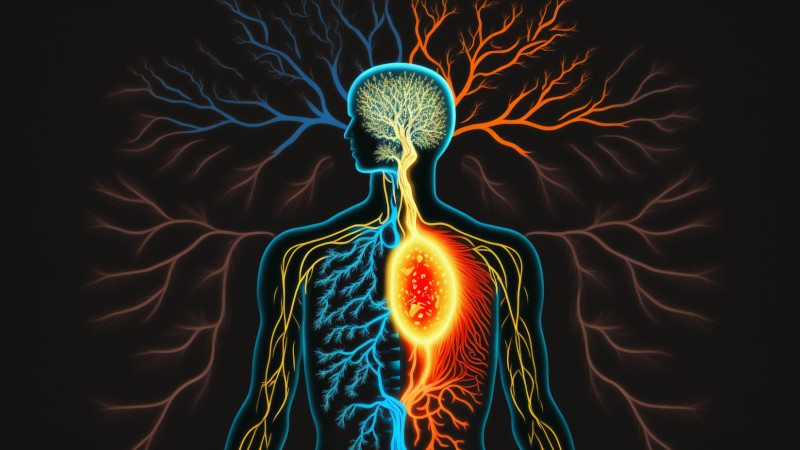
Further, emerging research into specific pain conditions like fibromyalgia, inflammatory pain, headache, neuropathic pain, and even opioid tolerance has underscored the link between gut bacteria and other chronic pain forms. 36
These researchers suggest that molecules derived from microbiota (the cells comprising your microbiome), metabolites (directly derived from our food), neurotransmitters, and neuromodulators can regulate peripheral and central sensitisation, impacting the onset and persistence of pain. 37 38 39 40 41 42
They propose dietary changes and the introduction of specific probiotics as potential management strategies for certain types of chronic pain. This burgeoning field of research presents promising prospects for future pain management.
How the Gut Lining Bolsters the Immune System?
The lining of our gut plays a crucial role in supporting our immune system. Gut permeability refers to the ease with which nutrients, including proteins, pass from your digestive system into your bloodstream. 43
A balanced gut maintains a precise balance, allowing only properly digested microscopic food particles to move across into the bloodstream.
However, if the intestinal lining becomes excessively permeable, or “leaky,” undigested microscopic food fragments may pass into the bloodstream, potentially causing inflammation, food sensitivities, immune dysfunction, and abdominal discomfort.
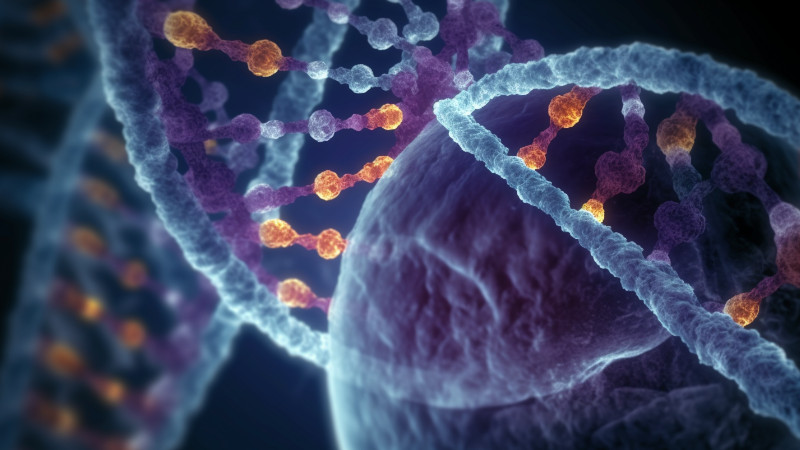
A healthy gut not only ensures our overall health and well-being but also helps prevent diseases of the gut and other body organs.
Numerous studies have explored the connection between our gut and immune system including:
Our microbiome serves as an educator to our immune system
We are born with a rudimentary immune system and receive protection from antibodies passed on from our mothers. As we grow, we develop our own antibodies from the food we consume, the environment we inhabit, and the pathogens we encounter. 44 45
Gut bacteria maintain immune system equilibrium
Our nose, lungs, and gut continually expose our immune system to novel elements like pollen, dust, dirt, and food. Our immune system’s role is to distinguish between “harmless” and “harmful” elements. 46
The diverse range of bacteria, fungi, and microorganisms living in our gut help the immune system build resilience against these new elements. This relationship is underscored by the fact that 70-80% of our immune cells reside in our gut.
The gut wall serves as a conduit between our body and the microbiota
As discussed earlier, the gut acts as a selective barrier, allowing beneficial molecules to pass into the bloodstream while keeping out harmful substances. 47
The gut wall is also home to various immune cells that form the first line of defense against harmful bacteria and substances.
What is the Link Between the Gut, Immune System, and Pain?
The gut, immune system, and pain are intertwined in a complex relationship. Immune cells in the gut can communicate with the nervous system and influence our perception of pain.
This interaction can be seen in conditions such as irritable bowel syndrome (IBS), where patients often experience heightened pain sensitivity.
When the gut becomes dysbiotic or the gut lining is excessively permeable, it can lead to an overactive immune response. This immune response can result in inflammation, which is a common cause of pain.
This inflammation can occur locally in the gut, causing conditions like IBS or inflammatory bowel disease (IBD). But it can also trigger systemic inflammation, which can result in pain in various parts of the body.
Understanding our gut is a journey into one of the most complex and fascinating systems in our body. From the intricate gut-brain axis to the gut microbiome’s role in shaping our immune system and pain perception, our gut is at the heart of our overall health and well-being. 48 49
As we continue to uncover the layers of our gut, we’ll delve deeper into these connections and their implications on our health in the forthcoming chapters of this series.
This in-depth exploration of our gut sets the stage for the remaining chapters, where we’ll delve deeper into the gut’s implications on pain, the gut-brain axis, the gut-immune axis, and how we can enhance our gut health to improve our overall well-being.
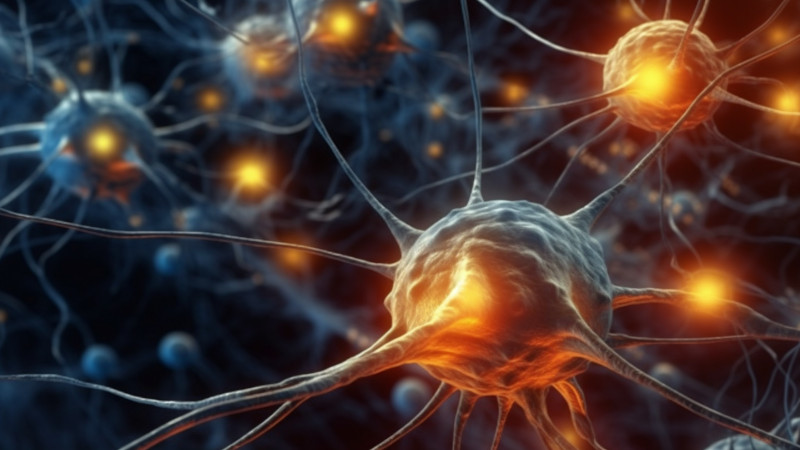
Finally, we touch upon the crucial topic of gut permeability. Our gut’s lining, or epithelial barrier, plays a critical role in filtering what gets into our bloodstream from our digestive tract.
A healthy gut has an optimal balance of permeability, enabling the passage of beneficial nutrients while blocking potentially harmful substances.
However, when this balance is disrupted, leading to an overly permeable or “leaky” gut, it can cause improperly digested food particles and toxins to enter the bloodstream, sparking inflammation and immune reactions.
Research has identified an intriguing connection between gut permeability and conditions associated with chronic pain, such as fibromyalgia and complex regional pain syndrome. 50
Emerging findings suggest an increase in gut permeability in individuals with these conditions. Thus, scientists are exploring whether enhancing gut health might help manage gut permeability and, in turn, these pain-related conditions.
Alongside physical pain, mental health issues like anxiety and depression often co-exist in individuals living with chronic pain. This intersection has led scientists to explore the relationship between mental health, gut permeability, and the gut microbiome. 51
Early research points to potential shifts in gut microbiome composition, increased gut permeability, and the presence of certain biomarkers in individuals with anxiety and depression.
In the grand scheme of things, understanding whether changes in the gut cause disease or result from it remains a complex puzzle.
But there’s no denying that our gut health plays a fundamental role in our overall health, influencing everything from our immune response to our mood, metabolism, and experience of pain. This knowledge underscores the importance of maintaining a healthy, balanced gut to support our overall well-being. 52
As we embark on the subsequent segments of this series, we’ll delve deeper into the various facets of gut health, including the gut-brain axis, the role of the gut microbiome in immunity, and the link between gut health and pain, providing a holistic understanding of this intriguing field.
Stay tuned for more insights in the upcoming instalments of this series on gut health and pain. Share your thoughts on gut health in the comments on Instagram and Pinterest.
References
- “Neurotransmitter modulation by the gut microbiota” – P. Strandwitz, 15 August 2019 [PubMed] [Archive] ↩︎
- “Adult Short Bowel Syndrome – Chapter 4 – Gut Microbiome” – G. A. M. Cresci, K. Izzo, 5 December 2018 [ScienceDirect] [Archive] ↩︎
- “The gut microbiome in health and in disease” – A. B. Shreiner, J. Y. Kao, V. B. Young, January 2015 [PubMed] [Archive] ↩︎
- “The digestive system” – R. Henderson, A. Bonsall, 31 May 2018 [Patient] [Archive] ↩︎
- “Human nutrition, the gut microbiome and the immune system” – A. L. Kau, P. P. Ahern, N. W. Griffin, A. L. Goodman, J. I. Gordon, 15 June 2011 [Nature] [Archive] ↩︎
- “Gut/brain axis and the microbiota” – E. A. Mayer, K. Tillisch, and A. Gupta, 17 February 2015 [JCI] [Archive] ↩︎
- “The enteric nervous system and gastrointestinal innervation: integrated local and central control” –
J. B. Furness, B. P. Callaghan, L. R. Rivera, H. J. Cho, 2014 [PubMed] [Archive] ↩︎ - “Stress & the gut-brain axis: Regulation by the microbiome” – J. A. Foster, L. Rinaman, J. F. Cryan, 15 March 2016 [ScienceDirect] [Archive] ↩︎
- “Current Understanding of Gut Microbiota in Mood Disorders: An Update of Human Studies” – T. T. Huang, J. B. Lai, Y. L. Du, Y. Xu, L. M. Ruan, S. H. Hu, 19 February 2019 [PubMed] [Archive] ↩︎
- “Pain regulation by gut microbiota: molecular mechanisms and therapeutic potential” – R. Guo, L. H. Chen, C. Xing, T. Liu, 16 July 2019 [ScienceDirect] [Archive] ↩︎
- “The Mind-Gut Connection Book” – E, Mayer, 2016 [Emeran Mayer] [Archive] ↩︎
- “Cesarean versus Vaginal Delivery: Long term infant outcomes and the Hygiene Hypothesis” – J. Neu, J. Rushing, 1 June 2012 [PubMed] [Archive] ↩︎
- “First Foods and Gut Microbes” – M. F. Laursen, M. I. Bahl, K. F. Michaelsen, T. R. Licht, 6 March 2017 [PubMed] [Archive] ↩︎
- “Age- and Sex-Dependent Patterns of Gut Microbial Diversity in Human Adults” – J. de la Cuesta-Zuluaga, S. T. Kelley, Y. Chen, J. S. Escobar, N. T. Mueller, R. E. Ley, D. McDonald, S. Huang, A. D. Swafford, R. Knight, V. G. Thackray, 14 May 2019 [American Society for Microbiology] [Archive] ↩︎
- “Intestinal Microbiota Is Influenced by Gender and Body Mass Index” – C. Haro, O. A. Rangel-Zúñiga, J. F. Alcalá-Díaz, F. Gómez-Delgado, P. Pérez-Martínez, J. Delgado-Lista, G. M. Quintana-Navarro, B. B. Landa, J. A. Navas-Cortés, M. Tena-Sempere, J. C. Clemente, J. López-Miranda, F. Pérez-Jiménez, A. Camargo, 26 May 2016 [PubMed] [Archive] ↩︎
- “The influence of ethnicity and geography on human gut microbiome composition” – C. A. Gaulke, T. J. Sharpton, 1 October 2018 [Nature Medicine] [Archive] ↩︎
- “The Gut-Brain Axis: The Missing Link in Depression” – A. Evrensel, M. E. Ceylan, December 2015 [PubMed] [Archive] ↩︎
- “Stress and the gut microbiota-brain axis” – G. Molina-Torres, M. Rodriguez-Arrastia, P. Roman, N. Sanchez-Labraca, D. Cardona, April 2019 [Behavioural Pharmacology] [Archive] ↩︎
- “Extensive impact of non-antibiotic drugs on human gut bacteria” – L. Maier, M. Pruteanu, M. Kuhn, G. Zeller, A. Telzerow, E. E. Anderson, A. R. Brochado, K. C. Fernandez, H. Dose, H. Mori, K. R. Patil, P. Bork, A. Typas, 19 March 2018 [PubMed] [Archive] ↩︎
- “Facing a new challenge: the adverse effects of antibiotics on gut microbiota and host immunity” – S. Zhang, D. C. Chen, 20 May 2019 [PubMed] [Archive] ↩︎
- “The gut microbiome: Relationships with disease and opportunities for therapy” – J. Durack, S. V. Lynch, 7 January 2019 [PubMed] [Archive] ↩︎
- “The role of gut microbiota in immune homeostasis and autoimmunity” – H. J. Wu, E. Wu, 1 January 2012 [PubMed] [Archive] ↩︎
- “Effects of Gut Microbes on Nutrient Absorption and Energy Regulation” – R. Krajmalnik-Brown, Z.-E. Ilhan, D.-W. Kang, and J. K. DiBaise, 24 February 2012 [PubMed] [Archive] ↩︎
- “The Role of Gut Microbiota in Intestinal Inflammation with Respect to Diet and Extrinsic Stressors” – S. Lobionda, P. Sittipo, H. Y. Kwon, Y. K. Lee, 19 August 2019 [PubMed] [Archive] ↩︎
- “Influence of Tryptophan and Serotonin on Mood and Cognition with a Possible Role of the Gut-Brain Axis” – T. A. Jenkins, J. C. D. Nguyen, K. E. Polglaze, P. P. Bertrand, 20 January 2016 [PubMed] [Archive] ↩︎
- “The Gut Microbiota: The Gateway to Improved Metabolism” – K. B. Martinez, J. F. Pierre, E. B. Chang, 1 December 2017 [PubMed] [Archive] ↩︎
- “Eubiosis and dysbiosis: the two sides of the microbiota” – V. Iebba, V. Totino, A. Gagliardi, F. Santangelo, F. Cacciotti, M. Trancassini, C. Mancini, C. Cicerone, E. Corazziari, F. Pantanella, S. Schippa, 13 July 2015 [New Microbiologica] [Archive] ↩︎
- “Bifidobacterium with the role of 5-hydroxytryptophan synthesis regulation alleviates the symptom of depression and related microbiota dysbiosis” – P. Tian, G. Wang, J. Zhao, H. Zhang, W. Chen, Date [ScienceDirect] [Archive] ↩︎
- “Current Understanding of Dysbiosis in Disease in Human and Animal Models” – A. K. DeGruttola, D. Low, A. Mizoguchi, E. Mizoguchi, 1 May 2016 [Oxford Academic] [Archive] ↩︎
- “The GC–MS metabolomics signature in patients with fibromyalgia syndrome directs to dysbiosis as an aspect contributing factor of FMS pathophysiology” – B. G. Malatji, S. Mason, L. J. Mienie, R. A. Wevers, H. Meyer, M. van Reenen, C. J. Reinecke, 27 March 2019 [SpringerLink] [Archive] ↩︎
- “Neuroinflammation in fibromyalgia and CRPS is multifactorial” – A. Vasquez, 3 March 2016 [Nature] [Archive] ↩︎
- “Dysbiosis in the Gut Microbiota of Patients with Multiple Sclerosis, with a Striking Depletion of Species Belonging to Clostridia XIVa and IV Clusters” – S. Miyake, S. Kim, W. Suda, K. Oshima, M. Nakamura, T. Matsuoka, N. Chihara, A. Tomita, W. Sato, S.-W. Kim, H. Morita, M. Hattori, T. Yamamura, 14 September 2015 [PubMed] [Archive] ↩︎
- “The Gut Microbiome Alterations and Inflammation-Driven Pathogenesis of Alzheimer’s Disease – A Critical Review” – M. Sochocka, K. Donskow-Łysoniewska, B. Satler Diniz, D. Kurpas, E. Brzozowska & J. Leszek, 23 June 2018 [SpringerLink] [Archive] ↩︎
- “Alteration of Gut Microbiota in Inflammatory Bowel Disease (IBD): Cause or Consequence? IBD Treatment Targeting the Gut Microbiome” – I. Khan, N. Ullah, L. Zha, Y. Bai, A. Khan, T. Zhao, T. Che, C. Zhang, September 2019 [PubMed] [Archive] ↩︎
- “The Microbiome and Irritable Bowel Syndrome – A Review on the Pathophysiology, Current Research and Future Therapy” – P. P. Chong, V. K. Chin, C. Y. Looi, W. F. Wong, P. Madhavan, V. C. Yong, 10 June 2019 [PubMed] [Archive] ↩︎
- “Gut microbiome: pertinence in fibromyalgia” – A. Minerbi, M. A. Fitzcharles, 01 February 2020 [Impact Factor] [Archive] ↩︎
- “What’s The Difference Between Microbiome And Microbiota?” – Atlas BioMed Staff, 14 January 2020 [Atlas BioMed] [Archive] ↩︎
- “What are Metabolites?” – T. Meštrović, 23 August 2018 [News Medical] [Archive] ↩︎
- “What are neurotransmitters?” – UQ Staff, Last Checked 4 May 2023 [Univeristy of Queensland] [Archive] ↩︎
- “What is Neuromodulation?” – A. Khetrapal, S. Coveney, 10 May 2021 [News Medical] [Archive] ↩︎
- “Peripheral sensitization” – Pysiopedia Staff, Last Checked 4 May 2023 [Pysiopedia] [Archive] ↩︎
- “What is Central Sensitization?” – M. J. McAllister, 23 March 2013 [ICP] [Archive] ↩︎
- “Intestinal permeability – a new target for disease prevention and therapy” – S. C. Bischoff, G. Barbara, W. Buurman, T. Ockhuizen, J. D. Schulzke, M. Serino, H. Tilg, A. Watson, J. M. Wells, 18 November 2014 [PubMed] [Archive] ↩︎
- “The Gut: Where Bacteria and Immune System Meet” – H. Fields, Last Checked 5 May 2032 [Johns Hopkins Medicine] [Archive] ↩︎
- “Role of the Microbiota in Immunity and Inflammation” – Y. Belkaid, T. Hand, 27 March 2015 [PubMed] [Archive] ↩︎
- “Regulation of Immunity & the Microbiome” – Immunopedia Staff, 27 June 2016 [Immunopedia] [Archive] ↩︎
- “How the Gut Microbiota Influences Our Immune System” – A. Adães, 8 July 2019 [Neurohacker Collective] [Archive] ↩︎
- “Interactions between gut permeability and brain structure and function in health and irritable bowel syndrome” – S. T. Witt, O. Bednarska, Å. V. Keita, A. Icenhour, M. P. Jones, S. Elsenbruch, J. D. Söderholm, M. Engström, E. A. Mayer, S. Walter, 20 March 2018 [ScienceDirect] [Archive] ↩︎
- “Pain Descending Pathways” – Physiopedia Staff, Last Checked 5 May 2023 [Physiopedia] [Archive] ↩︎
- “Altered intestinal permeability in patients with primary fibromyalgia and in patients with complex regional pain syndrome” – A. Goebel, S. Buhner, R. Schedel, H. Lochs, G. Sprotte, 7 June 2008 [PubMed] [Archive] ↩︎
- “Increased human intestinal barrier permeability plasma biomarkers zonulin and FABP2 correlated with plasma LPS and altered gut microbiome in anxiety or depression” – B. R. Stevens, R. Goel, K. Seungbum, E. M. Richards, R. C. Holbert, C. J. Pepine, M. K. Raizada, 29 June 2017 [BMJ] [Archive] ↩︎
- “All disease begins in the (leaky) gut: role of zonulin-mediated gut permeability in the pathogenesis of some chronic inflammatory diseases” – A. Fasano, 31 January 2020 [PubMed] [Archive] ↩︎
Last Updated on 6 months by D&C Editorial Team
